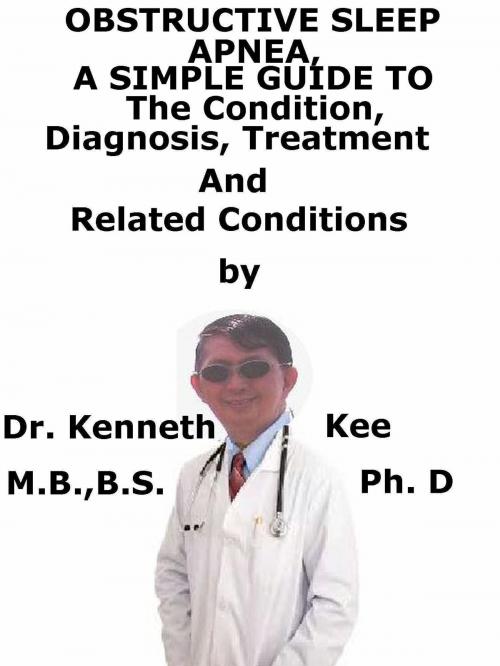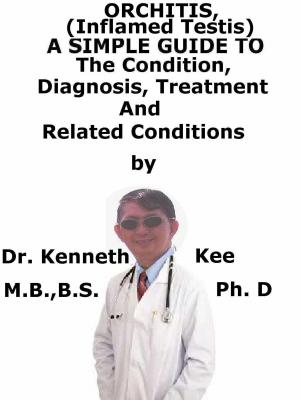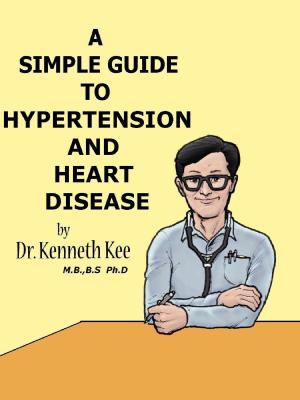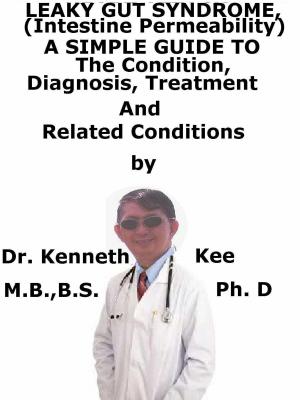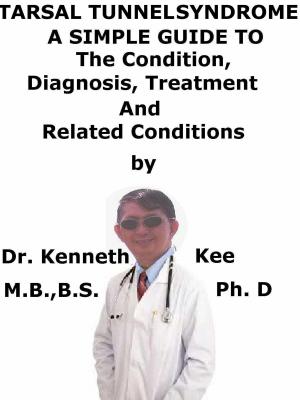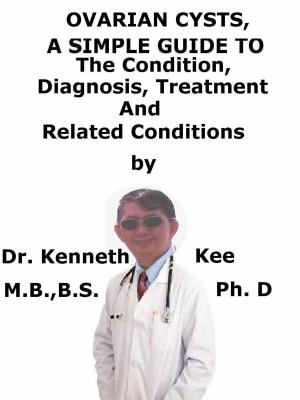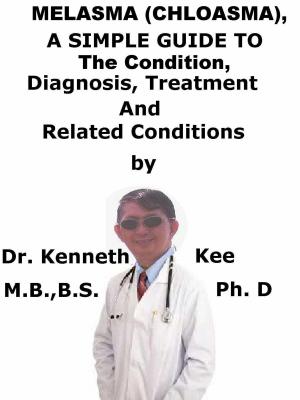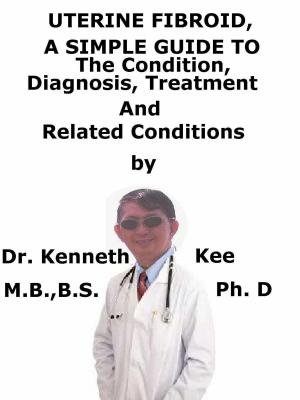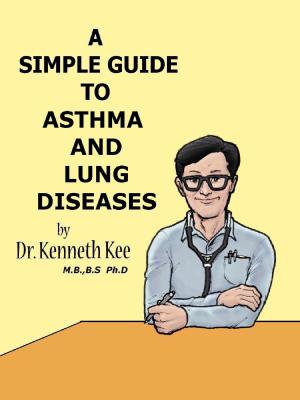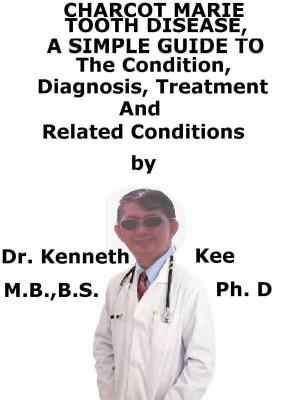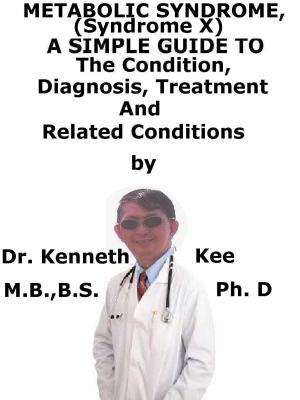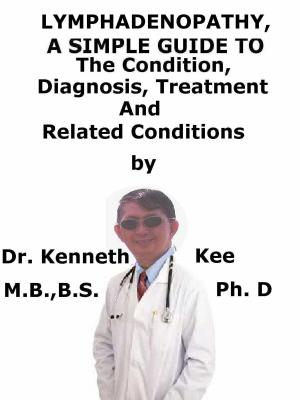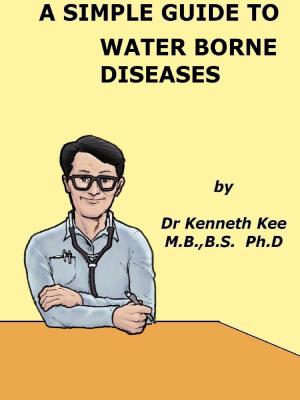Obstructive Sleep Apnea, A Simple Guide To The Condition, Diagnosis, Treatment And Related Conditions
Nonfiction, Health & Well Being, Health, Ailments & Diseases, Respiratory| Author: | Kenneth Kee | ISBN: | 9781370311989 |
| Publisher: | Kenneth Kee | Publication: | November 3, 2016 |
| Imprint: | Smashwords Edition | Language: | English |
| Author: | Kenneth Kee |
| ISBN: | 9781370311989 |
| Publisher: | Kenneth Kee |
| Publication: | November 3, 2016 |
| Imprint: | Smashwords Edition |
| Language: | English |
Obstructive Sleep Apnea (OSA) is the medical disorder in which there is intermittent and repeated upper airway collapse during sleep.
There is the absence of respiratory airflow (for 10 seconds or more) during sleep in spite of respiratory effort due to upper airway obstruction.
It is typically featured by repetitive pauses in breathing during sleep in spite of the effort to breathe and is normally linked with a decrease in blood oxygen saturation.
These pauses in breathing are called apneas (without breath) and normally last 20 to 40 seconds.
Obstructive Sleep Apnea is a serious, potentially disorder that is life-threatening.
Obstructive Sleep Apnea often goes undiagnosed and untreated.
Left untreated, obstructive sleep apnea raises one’s risk for high blood pressure, motor vehicle crashes, heart attack, stroke, and other medical disorders.
OSA is often accompanied with snoring.
Causes of OSA are:
a. Relatively low muscle tone,
b. Narrow nasopharynx, and
c. Large tongue, tonsils and adenoid.
Sufferers who normally sleep alone have often no knowledge of the disorder without a regular bed-partner to observe and make them know their symptoms.
As the muscle tone of the body ordinarily reduces during sleep, and the airway at the throat is made of walls of soft tissue, which can collapse, the breathing can be blocked during sleep.
Diagnosis is by:
1. Symptoms of snoring, nasal congestion and insufficient sleep are present
2. Notice of airway obstruction during sleep
3. Sleep study with monitoring devices such as
a. Electroencephalogram (EEG)
b. Electro-oculogram (EOG)
4. Electrocardiogram (ECG)
5. Blood oxygen levels
Mild Sleep Apnea is normally treated by some behavioral changes.
Losing weight, sleeping on the side is often advised.
There are a variety of oral mouth devices (that keep the airway open)
Moderate to severe Sleep Apnea is normally treated with a CPAP (continuous positive airway pressure).
CPAP is a machine that blows air into the nose through a nose mask keeping the airway open and not blocked.
Surgery treatment is:
1. Radiofrequency reduction is for mild OSA
2. Maxillo-mandibular Advancement is the most effective surgical intervention for treatment of OSA
3. Laser Assisted Uvuloplasty (LAUP), is a surgical intervention to eliminate the uvula and surrounding tissue to open the airway
TABLE OF CONTENT
Introduction
Chapter 1 Obstructive Sleep Apnea
Chapter 2 Causes
Chapter 3 Symptoms
Chapter 4 Diagnosis
Chapter 5 Treatment
Chapter 6 Prognosis
Chapter 7 OSA And Medical Disorders
Chapter 8 Insomnia
Epilogue
I have a patient recently whom I sent to a sleep center for sleep disorder study.
She was confirmed to have obstructive sleep apnea.
Her heart specialist was particularly concerned because the ECG showed evidence of stoppage of her heart for a few seconds.
He and the sleep specialist insisted that she wear the Continuous Positive Airway Pressure (CPAP) airway mask every night.
Initially she fought against the feeling of suffocation but has found that her symptoms have become so much better that she bought her own CPAP airway for night use.
There are some sleep apnea patients who had unable to tolerate the CPAP.
Obstructive Sleep Apnea (OSA) is the medical disorder in which there is intermittent and repeated upper airway collapse during sleep.
There is the absence of respiratory airflow (for 10 seconds or more) during sleep in spite of respiratory effort due to upper airway obstruction.
It is typically featured by repetitive pauses in breathing during sleep in spite of the effort to breathe and is normally linked with a decrease in blood oxygen saturation.
These pauses in breathing are called apneas (without breath) and normally last 20 to 40 seconds.
Obstructive Sleep Apnea is a serious, potentially disorder that is life-threatening.
Obstructive Sleep Apnea often goes undiagnosed and untreated.
Left untreated, obstructive sleep apnea raises one’s risk for high blood pressure, motor vehicle crashes, heart attack, stroke, and other medical disorders.
OSA is often accompanied with snoring.
Causes of OSA are:
a. Relatively low muscle tone,
b. Narrow nasopharynx, and
c. Large tongue, tonsils and adenoid.
Sufferers who normally sleep alone have often no knowledge of the disorder without a regular bed-partner to observe and make them know their symptoms.
As the muscle tone of the body ordinarily reduces during sleep, and the airway at the throat is made of walls of soft tissue, which can collapse, the breathing can be blocked during sleep.
Diagnosis is by:
1. Symptoms of snoring, nasal congestion and insufficient sleep are present
2. Notice of airway obstruction during sleep
3. Sleep study with monitoring devices such as
a. Electroencephalogram (EEG)
b. Electro-oculogram (EOG)
4. Electrocardiogram (ECG)
5. Blood oxygen levels
Mild Sleep Apnea is normally treated by some behavioral changes.
Losing weight, sleeping on the side is often advised.
There are a variety of oral mouth devices (that keep the airway open)
Moderate to severe Sleep Apnea is normally treated with a CPAP (continuous positive airway pressure).
CPAP is a machine that blows air into the nose through a nose mask keeping the airway open and not blocked.
Surgery treatment is:
1. Radiofrequency reduction is for mild OSA
2. Maxillo-mandibular Advancement is the most effective surgical intervention for treatment of OSA
3. Laser Assisted Uvuloplasty (LAUP), is a surgical intervention to eliminate the uvula and surrounding tissue to open the airway
TABLE OF CONTENT
Introduction
Chapter 1 Obstructive Sleep Apnea
Chapter 2 Causes
Chapter 3 Symptoms
Chapter 4 Diagnosis
Chapter 5 Treatment
Chapter 6 Prognosis
Chapter 7 OSA And Medical Disorders
Chapter 8 Insomnia
Epilogue
I have a patient recently whom I sent to a sleep center for sleep disorder study.
She was confirmed to have obstructive sleep apnea.
Her heart specialist was particularly concerned because the ECG showed evidence of stoppage of her heart for a few seconds.
He and the sleep specialist insisted that she wear the Continuous Positive Airway Pressure (CPAP) airway mask every night.
Initially she fought against the feeling of suffocation but has found that her symptoms have become so much better that she bought her own CPAP airway for night use.
There are some sleep apnea patients who had unable to tolerate the CPAP.
